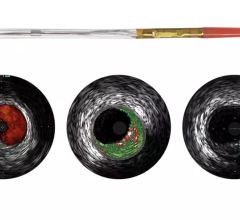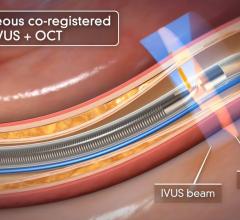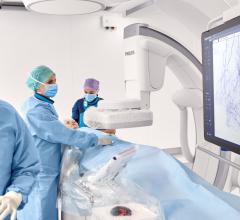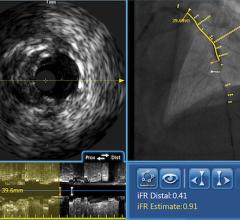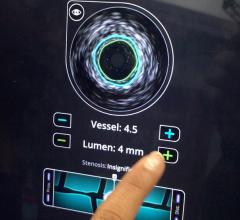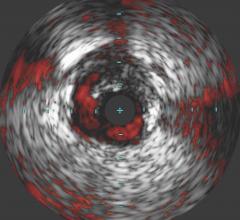
Volcano's OCT system can show stent strut apposition against the vessel wall.
January 6, 2010 – European CE mark clearance was granted this week for the Volcano OCT (optical coherence tomography) imaging system and catheter. Volcano said its OCT system will be commercially available in Europe in early 2011.
The OCT product line will complement the company’s existing line of IVUS imaging catheters and pressure guide wires used for coronary imaging and lesion assessment.
Volcano acquired its initial OCT technology through the acquisition of CardioSpectra Inc. in December 2007 and has been involved in numerous clinical studies in Europe and South America. The company has submitted an FDA investigational device exemption (IDE) to conduct studies in the United States and South America as part of a U.S. regulatory trial in 2010.
The company plans to incorporate OCT functionality into its s5i IVUS (intravascular ultrasound) integrated platform, as well as stand-alone OCT systems.
“This is an important milestone in the translation of OCT imaging to everyday patient care,” said Marc D. Feldman, M.D., professor of medicine and director of the cath lab at UTHSC San Antonio, Texas. “As cardiologists, we spend billions of dollars every year on coronary stents which have been proven to benefit patients. Technologies like OCT should help us better select the most significant blockages to treat, and help us ensure these stents are placed properly."
OCT is a light-based imaging technology designed to image the coronary artery for image guided PCI, lumen and stent assessments, visualizing thrombus and dissections, and to help assess intimal coverage in previously placed stents. It can also allow physicians to evaluate lesion cap thickness down into the 15-micron range.
Volcano is already working on its next generation OCT system that uses a high definition swept source (HDSS) light source to enable scans of the proximal two-thirds of the coronary artery in as little as one second. The new system will be called the Low Volume OCT (LVOCT) imaging system. Developing the LVOCT will also allowing interventional cardiologists to acquire OCT images during a routine coronary angiographic injection. This extremely low flush volume is expected to allow for optimal imaging while maximizing patient safety, clinical utility and ease-of-use.
For more information: www.volcanocorp.com


 November 07, 2024
November 07, 2024 

